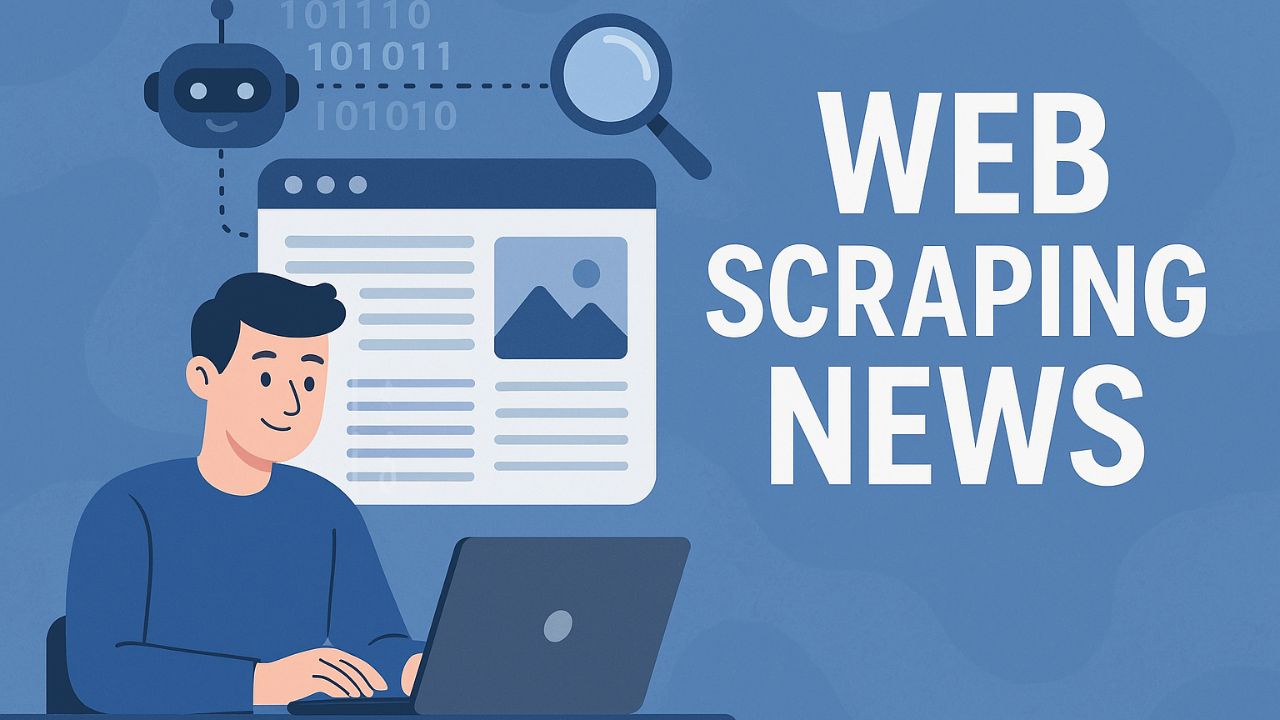Building Automated Web Scraping Workflows for E-Commerce Trend Intelligence
In today’s rapidly evolving e-commerce landscape, businesses that can detect market trends early gain a significant competitive advantage. Recent research shows that 90% of businesses report their industry has become more competitive in the last three years, with real-time marketing intelligence becoming a crucial differentiator.
The Cost of Missing Trends
Companies that fail to identify emerging trends face multiple risks:
- Late market entry: Competitors capture first-mover advantage, building brand awareness and customer loyalty before you enter the market
- Inventory misalignment: Investing heavily in product categories just as consumer interest shifts away
- Demand forecasting errors: Missing seasonal trends or viral social media-driven products
- Consumer preference blindness: Failing to adapt to changing tastes, especially among younger demographics
High-profile cases like Peloton’s inventory crisis during the pandemic and Stanley Tumbler’s viral TikTok fame demonstrate how quickly market conditions can change. What used to take months or years now happens in weeks or days.
Traditional Market Research vs. Automated Trend Intelligence
Traditional market research approaches are increasingly ineffective due to several limitations:
- They provide time-delayed snapshots rather than real-time data
- They rely on small, potentially biased sample sizes
- They’re expensive and slow to produce results
- They offer backward-looking insights rather than predictive analytics
Modern trend intelligence takes a fundamentally different approach by observing what consumers are actually doing in real-time, analyzing millions of data points, automating data collection, and building predictive models that anticipate future trends.
Understanding Trend Patterns
Trends follow a predictable pattern as they move through three distinct stages:
1. Early Stage: Where Trends Are Born
Trends typically emerge in niche communities where forward-thinking consumers gather:
- For younger demographics: TikTok micro-influencers, Discord servers, specialized forums
- For broader audiences: Pinterest mood boards, Etsy trending searches, Amazon’s new releases, Shopify trending product data, Reddit niche communities
2. Growth Stage: Where Trends Gain Momentum
As trends develop, they spread through:
- YouTube product reviews and unboxings
- Industry blogs and trade publications
- Smaller e-commerce sites and emerging brands
- Viral TikTok content that can accelerate adoption dramatically
3. Mainstream Stage: Where Trends Achieve Mass Adoption
Signals that a trend has gone mainstream include:
- Amazon bestseller list rankings
- Google search volume spikes
- Traditional media coverage
- Major retailers stocking the product
Building a Comprehensive Trend Radar
To effectively monitor trends across these stages, businesses need a system covering three main categories:
1. Social Media Monitoring
- Track TikTok performance metrics (saves, shares, comments)
- Monitor Pinterest pin saves and board additions
- Analyze YouTube video engagement beyond simple view counts
2. E-Commerce Intelligence
- Track rapid movement in Amazon bestseller lists
- Monitor new product launches on Shopify
- Observe Etsy trending categories and searches
- Watch Walmart’s trending now section
3. Search and Discussion Tracking
- Use Google Trends to identify search spikes
- Monitor Reddit engagement in relevant subreddits
- Track mention volumes and sentiment on Twitter/X
- Analyze question frequency on platforms like Quora
Creating a Technical Architecture
A comprehensive trend intelligence system consists of four interconnected layers:
1. Data Source Layer
The foundation that collects raw signals from:
- Social platform APIs and scraping inputs
- E-commerce product catalogs and reviews
- Search trend databases
- Content feeds from blogs and news outlets
2. Processing Layer
Where raw data becomes useful information through:
- Data normalization and cleaning
- Sentiment analysis
- Trend velocity calculation
- Cross-platform correlation analysis
3. Intelligence Layer
Where processed data transforms into meaningful insights via:
- Pattern recognition algorithms
- Predictive trend modeling
- Anomaly detection systems
- Competitive benchmarking
4. Action Layer
Where insights drive business value through:
- Automated alert systems
- Real-time dashboards and visualizations
- Integration with business tools
- Report generation and distribution
Real-World Implementation
A retail client implemented a simplified version of this approach that:
- Automatically monitors product rankings across eight e-commerce sites every morning
- Tracks products climbing bestseller lists rapidly
- Flags fast-moving products and calculates market opportunity
- Automatically adds promising items to their procurement pipeline
- Sends alerts to the buying team for strategic decisions
- Tracks which early signals lead to sustained sales growth
Within six months, this system helped them identify profitable trends 3-4 weeks before major competitors entered the market.
Overcoming Technical Challenges
Reliable data collection across multiple platforms presents several challenges:
Anti-bot Protections
Websites employ various methods to limit automated access, including CAPTCHAs, request limitations, and IP blocking.
Dynamic Websites
Commercial sites frequently change layouts, introduce new features, and run multivariate tests that can break scraping scripts.
Maintenance Burden
As you monitor more resources, the maintenance workload grows exponentially, and reliability often decreases.
Practical Solutions
To overcome these obstacles:
1. Use Web Scraping APIs
Managed services that handle anti-bot protection automatically and eliminate infrastructure management.
2. Implement Advanced Parsing
Build robust parsers with multiple fallback methods (CSS selectors, XPaths, pattern matching) to handle site changes.
3. Prepare for Recovery
Implement retry mechanisms with exponential backoff and automated fallback extraction methods.
4. Ensure Data Quality Control
Validate data in real-time, cross-reference information from multiple sources, and build fallback methods for critical data points.
Key Takeaways
- Timing is everything: Catching trends early can mean 10x returns; catching them late means falling behind
- Automation is essential: Manual monitoring cannot keep pace with social media-driven consumer behavior changes
- Integration creates value: Connect trend intelligence directly to business operations like inventory management, marketing campaigns, and product development
The most effective approach is to start with one high-impact platform, set up simple workflows to monitor trends, and expand as you see results. Choose automation tools that match your team’s skills, and prioritize actionable insights over data volume.
